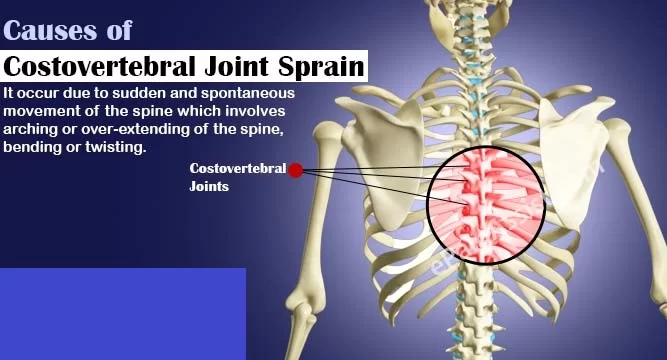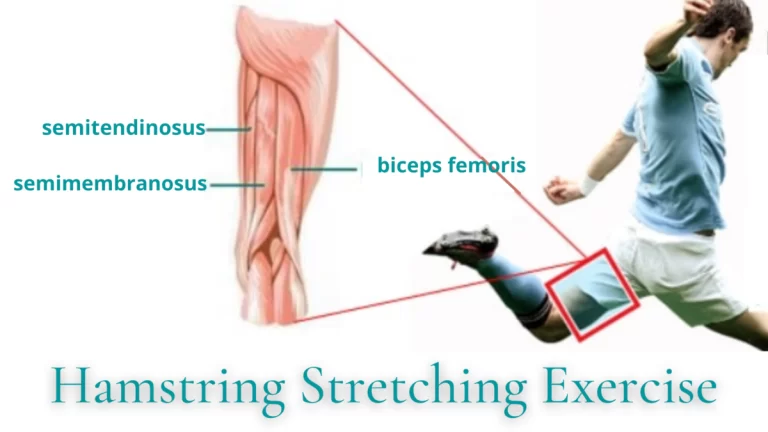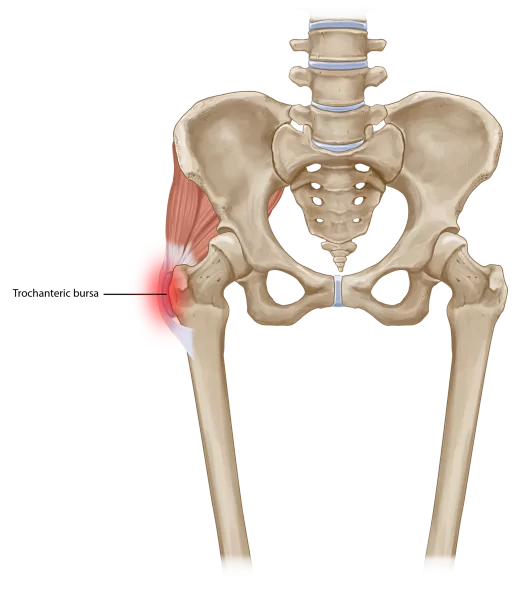Todd’s Paralysis
What is Todd’s Paralysis?
Todd’s paralysis is a neurological disease that presents as a time of paralysis following a seizure. It’s also known as Todd’s paresis or postictal paresis. This is a temporary weakness in your body can last for a few seconds, a few minutes, or several hours. The paralysis can be partial or full. With full paralysis, you won’t be capable to feel the involved body region at all. With partial paralysis, you can even feel some sensation in the involved region of your body.
Todd’s paralysis tends to involve one side of the body at a moment. Although Todd’s paralysis can simulate some symptoms of a stroke, it only happens after a seizure. In most circumstances, Todd’s paralysis happens in the part of the body that was involved in the seizure.
Epidemiology
About 13% of all seizures display signs of Todd paresis in one display or another. It does not have a gender bias and can happen at any precise age and in any race. About 90% of the people with postictal paralysis showed visible clonic motor motion during the seizure activity, while solely 10% of them had no ictal motor movement. Unilateral clonic movement is the most familiar predictor of postictal paralysis in 56% of people.
Symptoms of Todd’s Paralysis
The symptoms of Todd’s paralysis start right after a seizure. This is sometimes known as the postictal state, the time during which the brain heals and returns to its normal movement. During this time, some patients feel postictal symptoms like headache, sleepiness, or confusion, even though the seizure isn’t occurring anymore. Todd’s paralysis is a precise kind of postictal symptom.
Todd’s paralysis can induce weakness or occasionally a total incapacity to move specific parts of your body (paralysis). The involved regions might not be capable to feel sensations usually. In some patients, vision might be on the right or left side of your area of vision.
These symptoms generally involve one side of the body but not the further. For instance, your right arm and right leg might be involved, or your left arm and left leg. Occasionally, symptoms might involve one side of the face as well, which might induce slurred speech. Less generally, symptoms might happen in one leg or one arm alone. The symptoms generally involve the region of the body that was just previously affected by the seizure. These symptoms may last solely for a few minutes or may continue over a couple of days.
Not everyone who has a seizure will feel Todd’s paralysis. Furthermore, even if you’ve had an attack of Todd’s paralysis in history, you might not have one after a coming seizure.
Causes of Todd’s Paralysis
The symptoms of Todd’s paralysis happen after a patient has a seizure. This might occur after a seizure in a person who has been diagnosed with epilepsy, a medical disease that causes recounted seizures. Yet, it might also potentially occur in a person who has a seizure for another reason (like an electrolyte abnormality).
For causes that aren’t completely clear, Todd’s paralysis appears to be more familiar after seizures that generate physical motions during the seizure (known as clonic motor motions). Paralysis tends to involve the regions of the body that were moving involuntarily during the seizure.
Most generally, it happens after partial seizures or after generalized tonic-clonic seizures. Partial seizures involve only one region of the brain, and they might or might not induce loss of consciousness. Generalized tonic-clonic seizures (grand mal seizures) affect the loss of consciousness and jerking movements. Todd’s paralysis may last slightly longer in a patient who has it after a generalized tonic-clonic seizure likened to those who have it after a partial seizure.
Todd’s paralysis also occasionally occurs after electroconvulsive therapy (ECT) is provided for depression. Yet, in this case, the symptoms of Todd’s paralysis tend to go out even faster.
Underlying Causes
Though we know Todd’s paralysis occasionally happens after seizures, experimenters still don’t understand why it occurs. It appears to be related to differences in brain physiology that happen from the seizure, with individual neurons not capable to fire normally. But different factors may be affected as well.
Temporarily decreased blood flow to a part of the brain due to the seizure may be part of the issue. Because of this, specific regions of the brain might not be obtaining as much oxygen as normal. For instance, if the brain region controlling the motion of the right arm and leg is involved, you might temporarily have a problem moving your right arm and leg. As the brain returns to normal, symptoms go out on their own.
Risk Factors
Older people appear to have a higher risk of gaining Todd’s paralysis after a seizure.
Keeping Todd’s paralysis after a seizure is also more familiar in a patient who has had any of the following:
- Convulsive status epilepticus
- Prolonged seizures
- Epilepsy that has generated structural injury to the brain
- Previous stroke
Differences from stroke
Todd’s paralysis generally involves one side of the body, generating weakness or a loss of sensation, and it can cause speech slurred. Strokes can also generate these symptoms. The two health problems can reach one another, but they need various treatments.
A patient having a stroke requires emergency care. Doctors or physicians use drugs or surgery to try to fix the flow of blood to the brain.
Strokes bring time to heal, and many patients require rehabilitation. This may include support that assists the patient grip things, speaking, and walking, for instance.
By difference, Todd’s paralysis goes out after a relatively short time, after 15 hours, on average. There is generally no lasting effect. It is generally related to epilepsy, a disease that can be controlled, in most circumstances.
Yet, unless it is clear that the paralysis has observed a seizure, it may be unclear whether a patient is feeling a stroke or Todd’s paralysis.
Anyone who feels paralysis without a clear cause needs emergency medical supervision.
Differential Diagnosis
Non-convulsive status epilepticus: Generally happens after a prolonged seizure and may have little ictal motor manifestations, but does not show progress. EEG will display ictal activity.
Cerebrovascular accident (stroke): This may be determined by CT angiography, magnetic resonance angiography, brain MRI, or head CT scan. Care must be carried out with the performance of a perfusion CT scan, as there could be hypoperfusion following a focal or generalized epileptic seizure equal to a stroke.
Hemiplegic migraine: This is a periodic genetic mutation or familial migraine variant in which the person presents with typically, extreme, unilateral headache, ataxia, weakness, or paralysis.
Hemiconvulsion (Hemiplegia epilepsy syndrome): This clinical syndrome of infancy or early childhood (typically < 4 years old) is indicated by prolonged hemispheric seizure movement during a febrile illness, resulting in hemispheric atrophy and flaccid hemiplegia observed by focal seizures with an intermission of months to years.
Hypoglycemia: It is a well-known impersonator of stroke syndromes.
Psychogenic non-epileptic seizure: Display differs in intensity and does not follow an anatomic progression. Persons will fake an unresponsive condition and will conduct a quick recovery, and can simulate attacks of postictal paresis. Persons characteristically displayed a triad, involving asking what occurred, blinking their eyes, and looking disoriented in location.
Diagnosis
Medical testing is frequently required to assist determine the stroke from Todd’s paralysis. Possible tests might contain:
- Electroencephalogram (EEG)
- Magnetic resonance imaging (MRI)
- Computed tomography (CT) perfusion
- CT angiography
- These give hints about whether the symptoms are more presumably from a stroke or a seizure.
Depending on the case, a clinician might require to eliminate further possible reasons for symptoms. For instance, certain rare genetic syndromes might induce some symptoms equal to Todd’s paralysis.
Seizure Diagnosis
Additional tests may also be useful, depending on the problem. For instance, if it seems like a patient has had a seizure but hasn’t previously been analyzed with epilepsy, further causes of seizure might require to be examined. This might contain:
- Basic blood examinations of electrolytes
- Blood examinations to evaluate for infection
- Tests of blood glucose
- Urine tests
- These examinations cant interpret Todd’s paralysis, but they might mean an underlying reason for a seizure in a patient who hasn’t had one before. Various medical issues can lead to a seizure, including infection, alcohol withdrawal, low blood sugar, and others.
A neurologist can guide whether epilepsy is the most probable reason for the seizure.
Treatment of Todd’s Paralysis
There are presently no therapies for Todd’s paralysis. Controlling epilepsy can assist to decrease the risk of seizures, and thus also the risk of paralysis.
Medicine that alters the levels of chemicals in the brain assists in managing seizures in about 70% of patients with epilepsy.
Some patients report that their seizures have clear stimuli, such as flickering lights, tiredness, or stress. Avoiding these can assist to control seizures.
A patient with epilepsy may be capable to tell when they are close to having a seizure. This awareness is understood as a sign or aura. It may include:
- an uncommon smell or taste
- an extreme feeling of fear or delight
- an uneasy feeling in the stomach
If a patient feels that they are close to having a seizure, they should try to bring themselves into a position where they cannot harm themselves. This might include lying on the bottom away from walls and furniture and relieving any clothing near the neck. This protection can assist to control damage and blocked breathing if a seizure happens.
If Todd’s paralysis sets after a seizure, rest in as relaxed a position as likely until it goes out. The first time the paralysis happens, the patient needs medical attention.
Prognosis
The prognosis of this disease is excellent, as the postictal paralytic symptoms are self-limited and need no intervention.
Complications of Todd’s Paralysis
No complications are desired as the paresis is self-limiting. On events, some people are disclosed to unnecessary methods if the diagnosis is not recognized.
FAQ
How long can Todd’s paralysis last?
The paralysis can stay from half an hour to 36 hours, with an average of 15 hours, at which issue it settles completely. Todd’s paralysis may also involve speech and vision. Scientists don’t understand what causes Todd’s paralysis.
How common is Todd’s paralysis?
It may appear in up to 13% of seizure patients. Todd’s paresis may involve eye gaze, speech, or vision. It most generally happens after generalized tonic-clonic seizures.
Can paralysis be fully recovered?
There isn’t a treatment for permanent paralysis. The spinal cord can’t recover itself. Temporary paralysis such as Bell’s palsy frequently goes out over time without therapy. Physical, occupational and speech therapy can adjust paralysis and provide activities, and adaptive and assistive gadgets to enhance function.
Why does Todd’s paralysis happen?
Todd’s paralysis may also involve speech and vision. Scientists don’t understand what generates Todd’s paralysis. Current hypotheses indicate biological functions in the brain that include a slowdown in either the energy output of neurons (nerve cells) or in the motor (movement) centers of the brain.
Can paralysis be cured by exercise?
It will be unjust to believe that regular activity will heal persons of paralysis. Yet, it can assist to recover some extent of control over moving body muscles with the asset of such activities.







